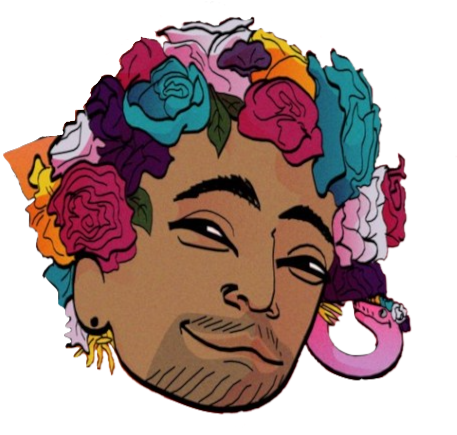La traducción entre dos mundos: Transcribiendo del inglés al castellano, de un medio auditivo a un medio visual
Content warning: sexual assault, rape culture, interpersonal violence,
For my major translation, I decided to translate “Episode 14 // Bury Your Heroes” of the podcast “Bitter Brown Femmes.”
In this episode, Ruben and Cassandra, the hosts, utilize the sexual misconduct allegations that came out against Junot Díaz as an entry point into the greater theme of believing, listening to, and supporting survivors. They examine other “culturally esteemed” abusers and discuss interpersonal violence and rape culture within communities of color, specifically in the Latinx community.

I decided to translate this 70-minute episode because of its focus on Junot Diaz, who I have read and studied in previous classes. The title, “Bury Your Heroes,” resonated with me because my professors, my classmates, and myself held Junot in such high regard, which is something this episode addresses. Once I learn someone is an abuser, my natural next step is “canceling” them. I consider taking this stance as one of the easiest ways to show survivors you believe and support them. There is not enough we do to keep public abusers accountable, not in our personal lives nor on a large societal scale. Recognizing how we regard abusers, including Junot Díaz, is important as we aim to be more supportive of survivors and hold abusers accountable.
Additionally, sexual dissidence, the topic of this course, is intricately related to violence, especially as it relates to the intersections of race and sexuality. Sexual violence can exist in any community, but addressing how womxn of color experience sexual violence, especially interpersonal violence, is critical in engaging sexual dissidence. There is dissidence in going against this patriarchal society, which is inherent in coming out at a survivor. Survivors’ stories should be the focus when discussing sexual misconduct. Centering the needs and wishes of survivors is exemplary of sexual dissidence because it shifts from the traditional focus on from white, heteronormative, patriarchal misogyny. The discussion of these intersections as they relate to sexual dissidence in the literary/academic world, is something that not only merits conversation, but also translation.
In terms of the medium, I chose a podcast because there is not a lot of focus on translating auditory media (podcasts, videos, radio, songs, etc.). In a similar way that transcriptions or subtitles make auditory media more accessible for people of abilities, translations are able to provide this accessibility to an even broader audience. Also, the mobility of a podcast adds to its accessibility.
The representation of my translation can be found here:
La traducción entre dos mundos: Transcribiendo del inglés al castellano, de un medio auditivo a uno visual by Gina Mariana

One of the key challenges in my translation project was going from an auditory medium to a visual medium. How do you represent the fluidity of conversation in a stiff, rigid format like text?

I edited their podcast cover and represented their voices with images of their faces. Whenever either of them speaks, their head pops up next to the text. In some cases, their faces are more transparent, to represent them interjecting into the conversation.
To make the translation more interactive, like a conversation would be, little arrows and bright colors take your eyes to more material. Sometimes the arrows lead to information on why certain translation choices were made. Other times they lead to cultural context clues, like explaining what The New Yorker is. Flags take you back to an earlier mention of a similar topic. For example, instead of explaining my translation of “mujeres de color,” I make a reference to earlier in the text when I described my translation of “hombres de color.” Additionally, some arrows to you to another part of the internet. When I reference the #MeToo movement, double-clicking the Twitter icon takes you to #MeToo on Twitter, so you can see real-time references. Some arrows take you to music, others take you to Amazon so you can support survivors of color. Finally, I end the project with a link to the Patreon page for the Bitter Brown Femmes podcast, so others can support them. I also insert Kelis’s song Brave because the episode ends with this song.
As I mentioned earlier, the podcast is 70-minutes. I translated the entirety of the episode, but only present about 50 minutes of material. I translated the main content of the episode. I plan to provide Bitter Brown Femmes with a translation of the entire episode so they can decide what they do with the material.
Keeping my project on Canva allows public access to my work. Additionally, this format keeps the document live so I am able to translate it if more annotations needs to be added, like more explanations of translations or if more context is needed.